What is Google’s Knowledge Graph? A Definition for Marketers
Google’s Knowledge Graph is changing the way people use search engines, shifting expectations online, and threatening internet marketing as we know it. Is your brand or business meeting the changes, or is the Graph still a bit of a mystery?
What is the Knowledge Graph?
Google’s primary goal has always been to deliver the most relevant results possible to each and every word or phrase a user types into their search box. And they have come a long way, especially with the Knowledge Graph. The Knowledge Graph is Google’s massive database of facts and relationships, served to users above and to the side of search results in order to provide fast answers to simple questions. Knowledge Graph results are not Google’s own content: they are snippets of text from websites displayed on search result pages, typically with links to the source website. The Graph has been restructuring Google’s search results pages for almost three years, delivering fast answers without requiring users to click through to another website. And users love it, so Google continues to pour resources into expanding it. Most recently, the Knowledge Graph “turned on” for song lyrics and basic medical information.
How Does the Knowledge Graph Work?
The inner workings of the Knowledge Graph is Google’s strategic web of information algorithms that enables the search engine to understand queries as objects in the real world, as well as how those objects relate to each other. That’s why a search for “Claude Debussy” returns a Knowledge Graph panel that includes suggestions for other composers who were his contemporaries. 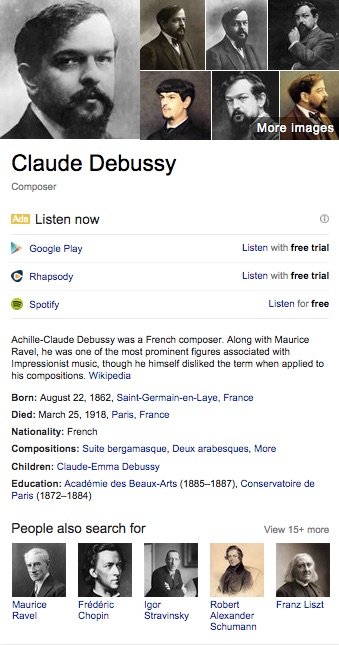 Two of Google’s strengths are being flexed to produce such rich results: an understanding of entities and user intent. Entities are basically nouns, but Google has been hard at work recognizing them as people and things in real life. That’s how the Graph can pull together a side panel for “fighting illini” — it’s not just matching the words to website copy, it understands that the Fighting Illini is a sports team.
Two of Google’s strengths are being flexed to produce such rich results: an understanding of entities and user intent. Entities are basically nouns, but Google has been hard at work recognizing them as people and things in real life. That’s how the Graph can pull together a side panel for “fighting illini” — it’s not just matching the words to website copy, it understands that the Fighting Illini is a sports team. 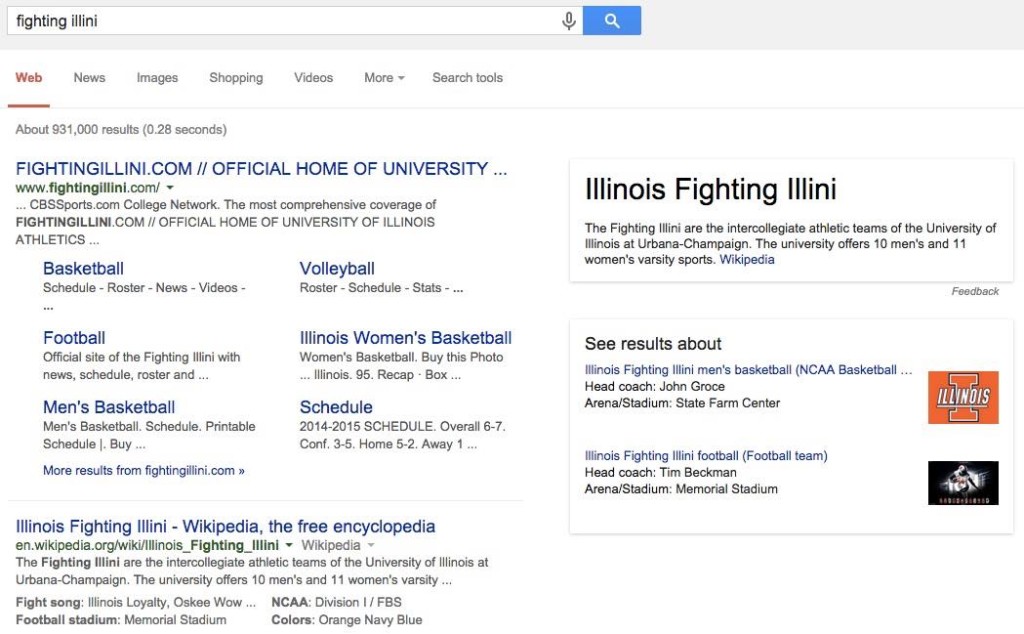 User intent speaks to the end goal that a user has in mind when she types in a search query. This information comes into play with organic search results, but Google is also using it to clarify a search rather than cramming a blend of results on one page. The second panel box above asks the user if she’s looking for the Fighting Illini basketball team, or football team.
User intent speaks to the end goal that a user has in mind when she types in a search query. This information comes into play with organic search results, but Google is also using it to clarify a search rather than cramming a blend of results on one page. The second panel box above asks the user if she’s looking for the Fighting Illini basketball team, or football team.
Why Should Marketers Care?
The primary concern for online marketing is clear: loss of traffic! But there’s more.
- Quick info is winning. Users are demanding answers faster than ever, and Google is delivering. They’re keeping users on Google landing pages longer by providing exactly what users want.
- Lead generation is changing. It’s as important as ever to capture emails from organic traffic, and grow your following on social channels, so you can nurture leads and build your own audience.
- “Quality content” is crucial. Marketers have been honing in on what makes content “high quality,” and it’s time to start really delivering.
The Knowledge Graph is changing Google search results, which means it’s changing SEO and online marketing. Marketers need to evolve. We outline key strategies and share a lot of detail in our new ebook, The Essential Guide to Marketing with Google’s Knowledge Graph.
How is the Graph Changing Search Results?
There are four expressions of the Knowledge Graph that we’re currently seeing on Google search engine results pages (SERPs). Answer boxes appear at the top of the main column to provide quick answers for data-driven queries: 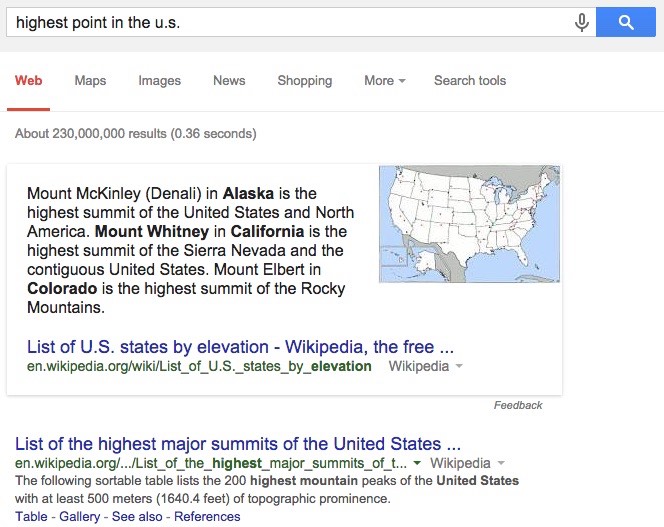 Knowledge Graph panels fill in the right sidebar of the SERP. They provide a variety of information based on the search, but usually basic information, links to related media, and other related queries.
Knowledge Graph panels fill in the right sidebar of the SERP. They provide a variety of information based on the search, but usually basic information, links to related media, and other related queries. 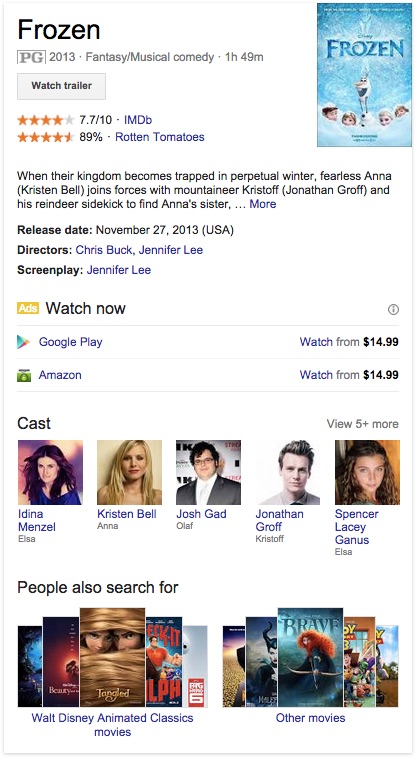
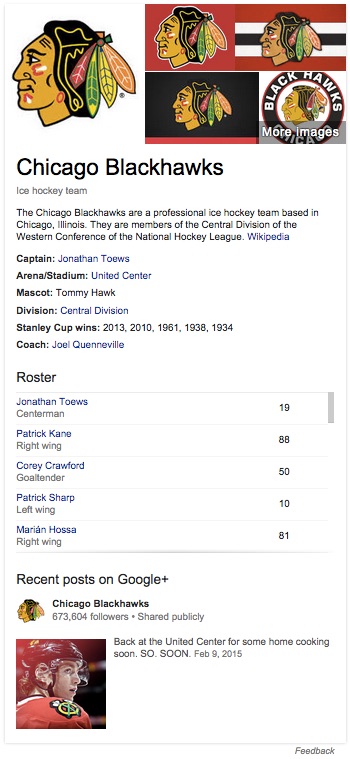 Carousels appear at the top of the SERP when the best answer to a query is a series of answers, such as presidents, movies, or cast members.
Carousels appear at the top of the SERP when the best answer to a query is a series of answers, such as presidents, movies, or cast members. 
 Structured snippets add details to the organic listings of websites with clear frameworks, like Wikipedia.
Structured snippets add details to the organic listings of websites with clear frameworks, like Wikipedia. 
 The good news is that while these Knowledge Graph features are changing the way users interact with SERPs, there are also some simple steps marketers can take to optimize their websites for the Graph. Smart SEOs, publishers, and webmasters are adapting their strategies to drive growth both in spite of and in light of the Graph.
The good news is that while these Knowledge Graph features are changing the way users interact with SERPs, there are also some simple steps marketers can take to optimize their websites for the Graph. Smart SEOs, publishers, and webmasters are adapting their strategies to drive growth both in spite of and in light of the Graph.
Keeping Up With the Graph
Two years ago, the Knowledge Graph was one more thing that Google was trying. Occasionally it was a new feature on a SERP, but nothing earth-shattering. Today, it’s clear that the Graph is here to stay. And by studying its development, we can make some predictions about where it might be headed so we can best prepare our marketing tactics. The implications touch all of online marketing — from social and design, to content and SEO — and savvy marketers are starting today.
Ready for more? Download The Complete Guide to Marketing With Google’s Knowledge Graph to get more thorough insights, more examples, more predictions, and more practical tips and strategies for driving organic search traffic with or without the Graph.
What's Next?
Profound Strategy is on a mission to help growth-minded marketers turn SEO back into a source of predictable, reliable, scalable business results.
Start winning in organic search and turn SEO into your most efficient marketing channel. Subscribe to updates and join the 6,000+ marketing executives and founders that are changing the way they do SEO:
And dig deeper with some of our best content, such as The CMO’s Guide to Modern SEO, Technical SEO: A Decision Maker’s Guide, and A Modern Framework for SEO Work that Matters.




